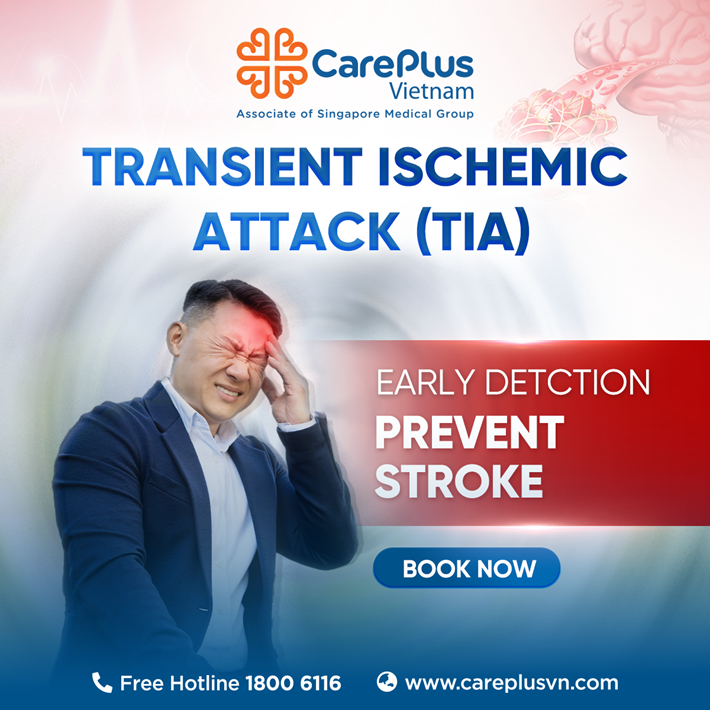TRANSIENT ISCHEMIC ATTACK (TIA)

8/6/2025 1:31:19 PM
A Transient Ischemic Attack (TIA) is a serious neurological event that should be clearly understood, as it serves as an early warning of an impending ischemic stroke.
What is TIA?
A TIA is a transient episode of focal cerebral ischemia without acute infarction detectable on neuroimaging (MRI/CT).
Cerebral blood flow is restored quickly enough to prevent permanent brain tissue damage.
Symptoms are typically short-lived, most lasting less than 1 hour—many resolve within minutes. If neurological deficits persist for more than 1 hour, a completed stroke is more likely.
The danger lies in the fact that while TIAs leave no immediate permanent deficits, they strongly indicate a high short-term risk of a full-blown stroke—sometimes within the next 24–48 hours.
Key Warning Signs – FAST mnemonic:
F – Face: Sudden facial droop or asymmetry
A – Arm: Weakness or numbness in one arm or leg
S – Speech: Slurred or impaired speech, difficulty finding words
T – Time: Sudden onset—call emergency services immediately
Other Possible Symptoms:
- Transient monocular vision loss (amaurosis fugax)
- Sudden dizziness, vertigo, or loss of balance
- Numbness or tingling in the face or limbs
- Brief loss of consciousness
- These symptoms appear abruptly and may resolve within minutes to hours—but should never be ignored.
- High-Risk Groups for TIA:
- Age ≥55 years
- Hypertension
- Cardiac arrhythmias (particularly atrial fibrillation)
- Diabetes mellitus
- Smoking
- Hyperlipidemia, atherosclerosis
- Family history of stroke
- Previous TIA or stroke
- Carotid artery disease (e.g., carotid stenosis)
- Other cardiovascular diseases (heart failure, valvular disease, recent myocardial infarction)
- Sedentary lifestyle, obesity
Why Urgent Evaluation is Essential:
- 20–40% of ischemic stroke patients report a preceding TIA
- 10–15% of TIA patients will have a stroke within 3 months
- Highest risk is within the first 48 hours
- TIA is a neurological emergency, not a minor event
Prevention of TIA and Stroke:
- Control blood pressure, lipid levels, and blood glucose
- Quit smoking, limit alcohol
- Maintain a healthy weight and exercise regularly
- Undergo regular medical check-ups and cardiovascular screening—especially for those with existing cardiac or vascular conditions
References:
American Stroke Association (ASA). Guidelines for the Early Management of Patients with Acute Ischemic Stroke, 2019.
WHO Global Stroke Guidelines.
Vietnam Stroke Association – Updated Recommendations on TIA and Minor Stroke.